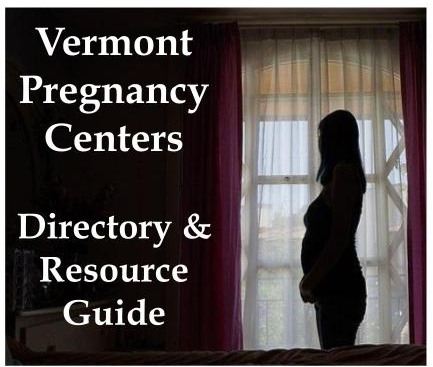By Jack Borbee
Between 2017 and 2021, the office budgets of Vermont’s statewide elected officials – the Governor, the Lieutenant Governor, the Attorney General, the Secretary of State, the State Treasurer, and the State Auditor – saw their collective appropriation rise by a little over $3 million–or roughly 10 percent. That equates to a modest 2.6 percent annual increase, on average–not anything that would raise eyebrows.
But consider that, over the same period, the Lieutenant Governor’s budget skyrocketed by more than 35 percent, while the Auditor’s budget fell by nearly 7 percent. And while the Lieutenant Governor’s Office remained at just two full time employees, the Secretary of State’s Office added 7 new positions.
How does this all break down? What’s driving these budgetary changes? And why are they so different from office to office?
Crunching the Numbers
According to reports gathered from the Legislative Joint Fiscal Office (JFO) and the Vermont Legislature’s website, there’s quite a different budgetary picture across statewide officeholders.
Governor Scott inherited a $1.88 million office budget when he took office – a budget which has barely changed since then, actually declining by a little over 1 percent. He’s added no new positions.
In contrast, former Lieutenant Governor Zuckerman took the nearly $200,000 budget he inherited from then-Lieutenant Governor Scott and increased it by more than 27 percent in a single year. As a result, current Lieutenant Governor Molly Gray inherited a much more favorable budget than was the case just a handful of years ago. But with just two full time employees – the LG and a Chief of Staff – the Lieutenant Governor’s Office remains the least-staffed across state government.
The Secretary of State’s Office experienced modest budget growth, but the largest increase in full-time employees (FTEs). Meanwhile, both the Attorney General’s Office and the State Treasurer’s Office saw slightly larger budget increases, but smaller growth in the number of FTEs.
To round it out is the State Auditor’s Office–which experienced a nearly 7 percent budget decrease over the same period, an unusual trend in state government.
Where’s the Change?
While Governor Scott’s office did not respond to requests for comment, he is known to be more fiscally conservative–thus explaining his office’s relatively unchanged budget and position count.
The Lieutenant Governor’s Office represents a more curious case. As noted above, former Lieutenant Governor David Zuckerman took a nearly 30 percent budget increase in just one year. The Vermont Daily Chronicle dove into the budget records to find out why. According to state reports, between FY17 and FY18, the Lieutenant Governor’s Office went from requesting $37,660 for fringe benefits to $76,966--a 104.4 percent increase in a single year. No new positions were added, but someone – either the Lieutenant Governor or his then-Chief of staff, Megan Polyte–took a hefty increase in state benefits.
The Office of Lieutenant Governor Molly Gray did not respond to requests for comment, but in documents obtained by Vermont Daily, Gray asked for a 13.8 percent budget cut. The decrease was almost entirely attributable to Gray’s request for a more than 35 percent slash in her office’s own benefits.
While Secretary of State Jim Condos has reported very modest budget growth over the past several years, according to the Department of Human Resources he has added 7 new full-time positions–the largest increase among statewide officeholders. In his most recent budget report, Secretary Condos highlights the numerous divisions in his office, covering a wide array of areas–from elections to business registrations. His current budget request calls for a 6.8 percent increase over current proportions – which would be greater than his last four budget increases combined. The Secretary of State’s Office did not respond to requests for comment.
Attorney General TJ Donovan is responsible for statewide criminal investigations and any litigation the state finds itself in. His office budget has grown by an average of nearly 5.5 percent per year over the last several years, with a slight increase in the number of FTEs. His current budget request continues that upward trend – asking for another $340,000. The Attorney General’s Office did not respond to requests for comment.
Deputy Treasurer Michael Clansen noted to Vermont Daily that “While on an annual basis there are a number of line items which may go up or down, generally the increases are largely related to negotiated pay increases, which do not flow through the State’s pay act process.” As such, the Treasurer’s budget increases have been moderate over the past several years. Treasurer Pearce’s FY2022 budget request of a 3.65 percent increase reflects that trend. (For purposes of simplicity, the Treasurer’s budget portrayed in this story reflects just administrative expenses–net of any costs related to state pensions and other unrelated items.)
State Auditor Doug Hoffer is on an island on his own. Since FY2017, his budget has declined nearly 7 percent, or about 1.7 percent per year. In documents provided by the Auditor’s Office to Vermont Daily, this point is underscored. Hoffer notes that his office’s spending has dropped while statewide spending and personal income tax receipts have both grown.
For a series of reasons, Hoffer’s FY22 budget proposal reflects a deviation from the norm – a 12.9 percent budget increase following years of declines. According to Hoffer, these “increases are largely unavoidable” and are due to a variety of factors, including increased audits, employee compensation changes, and fee-for-space charge increases. However, Hoffer also notes that the actual budgetary effect is likely to be more modest – due to COVID-19 relief funds and municipalities paying for some of his audit-related expenses.
The Bottom Line
All-in-all, spending by statewide officeholders has continued at a modest pace – with significant variation from office-to-office. Now, some course-correction is taking shape. Lieutenant Governor Gray is requesting a budget cut after a sharp spike under former Lieutenant Governor Zuckerman, while Auditor Hoffer is asking for a larger slice of the pie following repeated budget decreases.
The net result is a cumulative budget of statewide elected officials that closely mirrors overall state spending, just above the rate of inflation. Certain elected officials – like Scott and Hoffer – have carried their weight over the past several years by decreasing their budgets, while others sought spending spikes. But in the increasingly-approaching reality of post-COVID world appearing on the horizon, who knows what state spending will look like.
Categories: State Government










No more money for the foxes guarding the chicken coop. If they don’t like it, they can resign.